Because they represent such a diverse and important (to wildlife) component to the vegetational community at the park, we have afforded vines
their own special category/listing. Poison ivy, for example, is the single most important food source for birds and some mammals during the
winter months.
Family Anacardiaceae
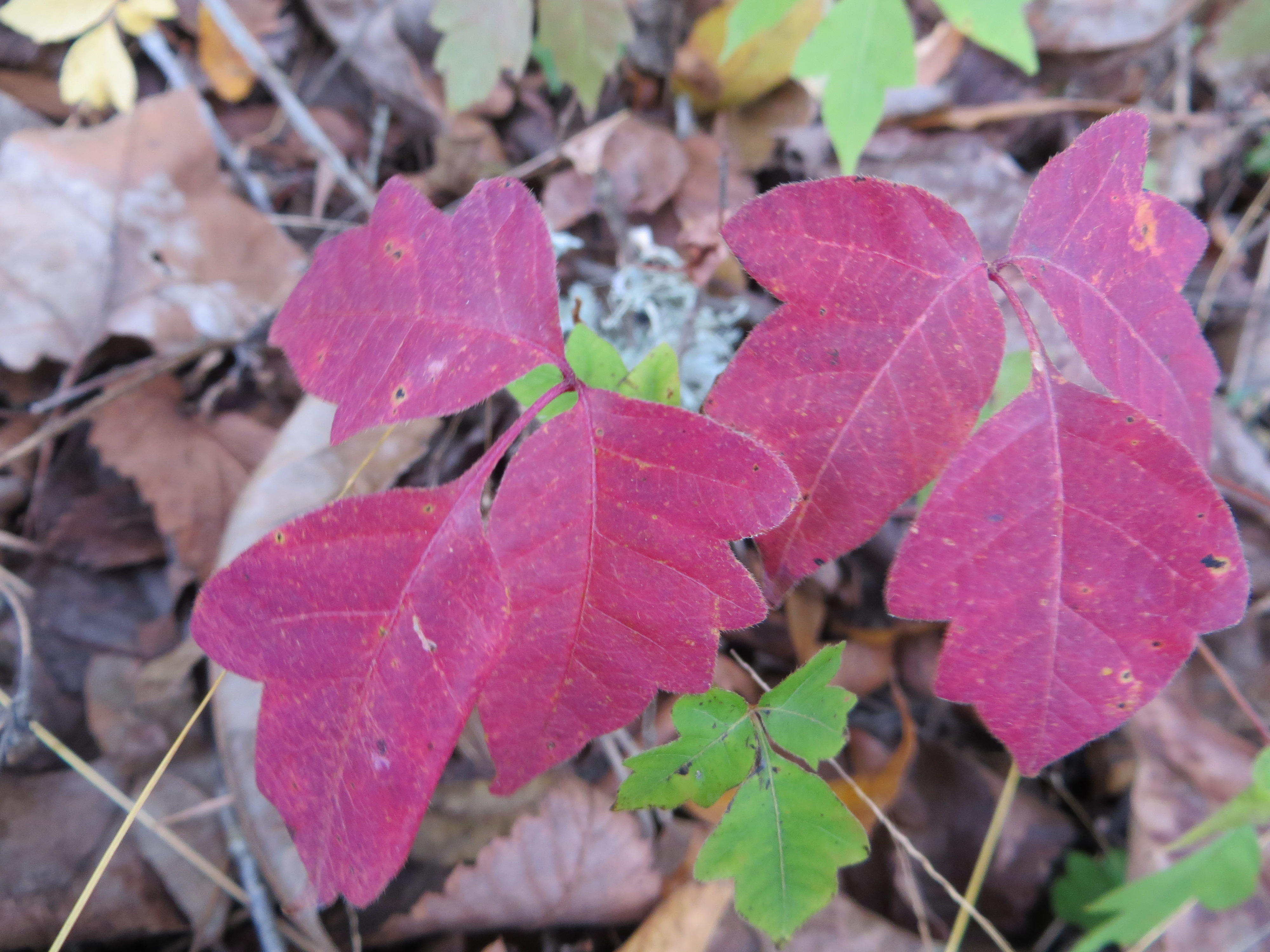
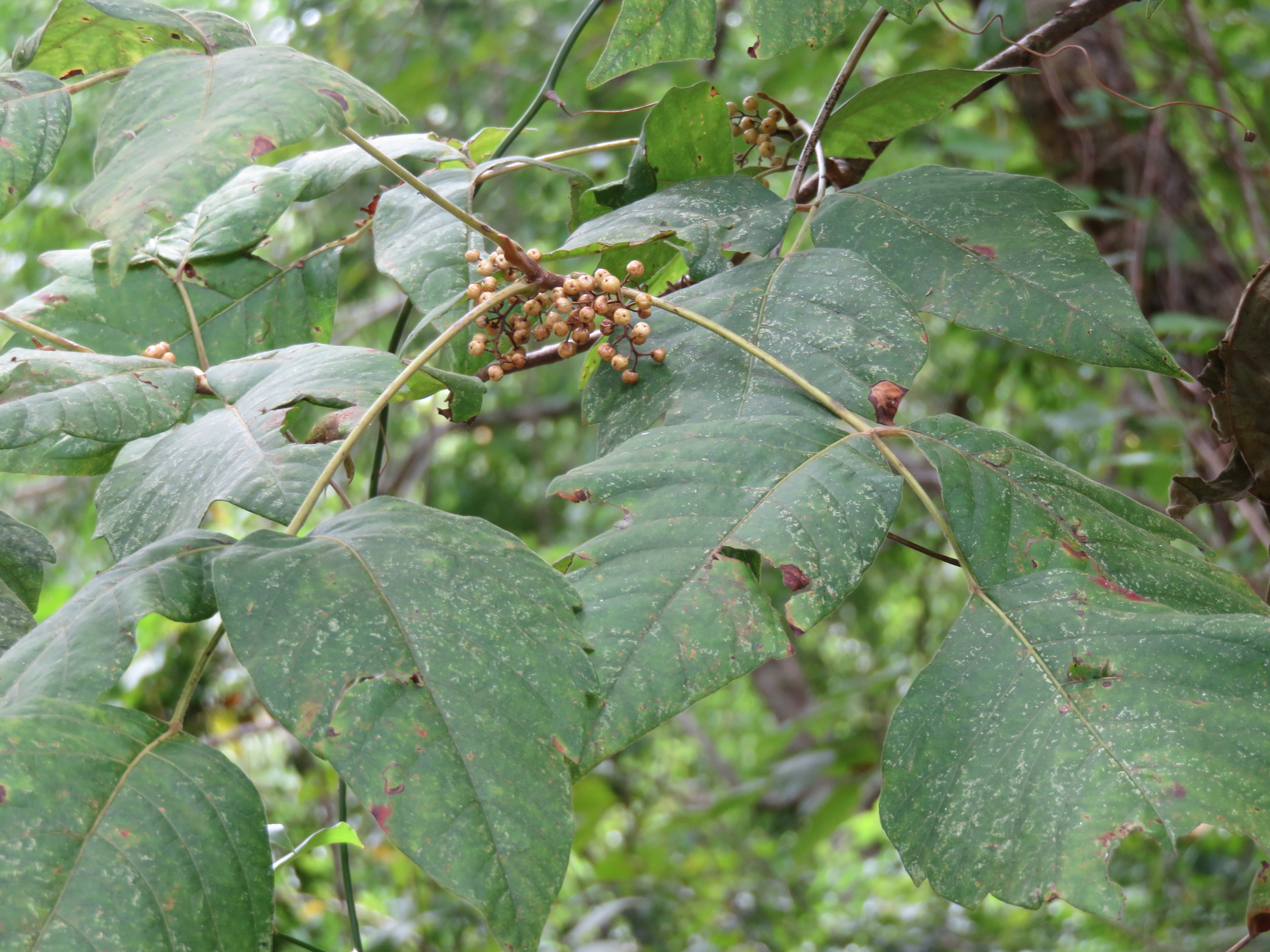
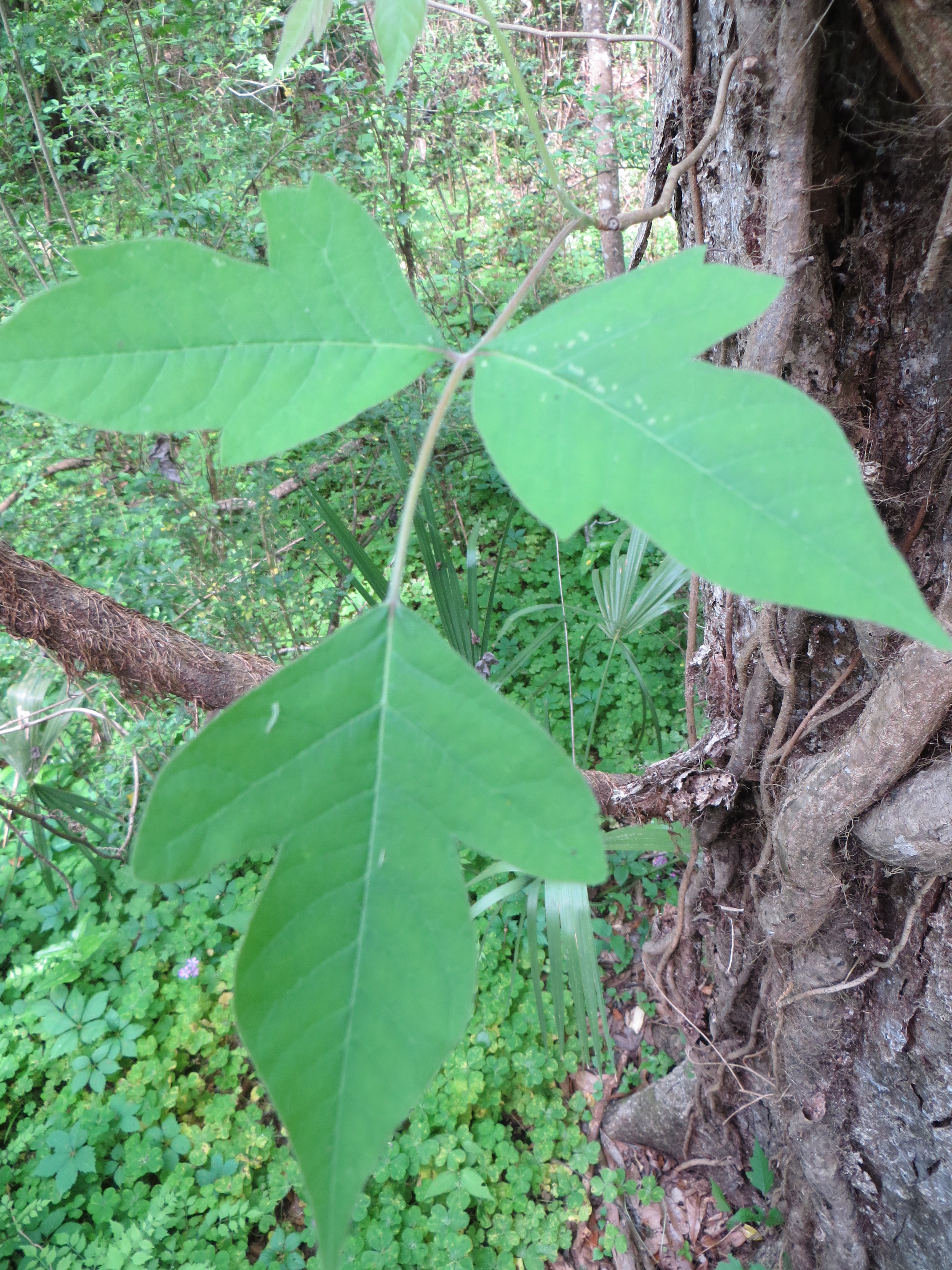
|
Poison Ivy - Toxicodendron radicans
The single most important food source for birds and some mammals during the winter months. Over 26 species of birds feed on poison ivy. Easily
identified by its three irregularly lobed leaflets, hence the saying, "Leaves of three, let it be." Vines growing up are very hairy and
grow close to the trunk. Its poisonous oil may cause a rash upon contact, although some people are not as susceptible as others. Foliage turns red
or orange in the fall. Often confused with Virginia Creeper or just about any other vine or box elder seedlings. |
Family Asteraceae

|
Hemp Vine - Mikania scandens
This herbaceous vine has opposite triangular leaves on long petioles. Clusters of small white flowers smell like vanilla. |
Family Bignoniaceae
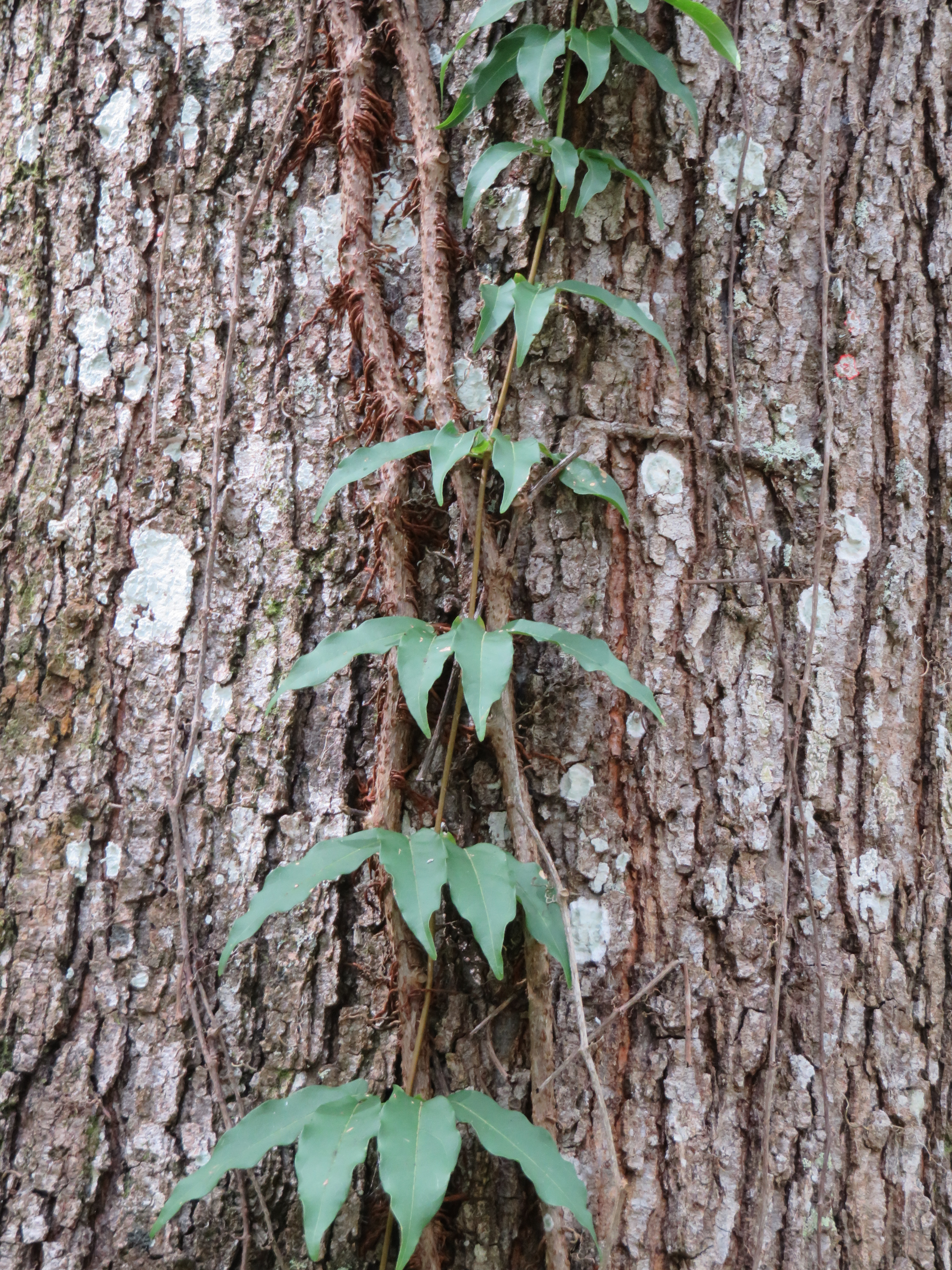
|
Cross Vine - Bignonia capreolata
Each leaf has a forked tendril and two opposite leaflets. Showy, 2-inch yellow and orange flowers in spring. A good nectar source for ruby-throated
hummingbirds, since it flowers earlier than other nectar sources. Rabbits and other animals enjoy the fruit. The stem is sometimes smoked like a
cigar.
|
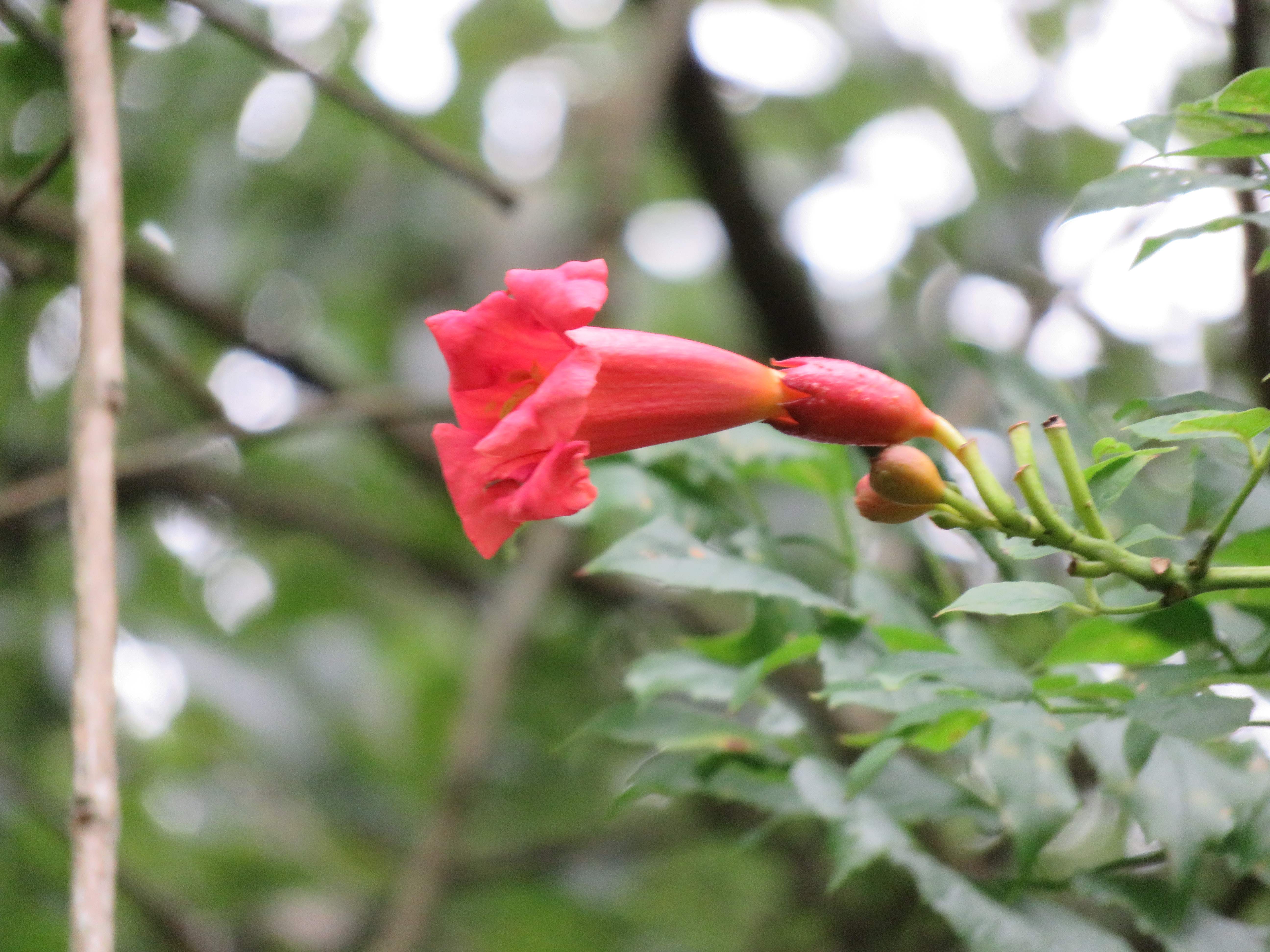
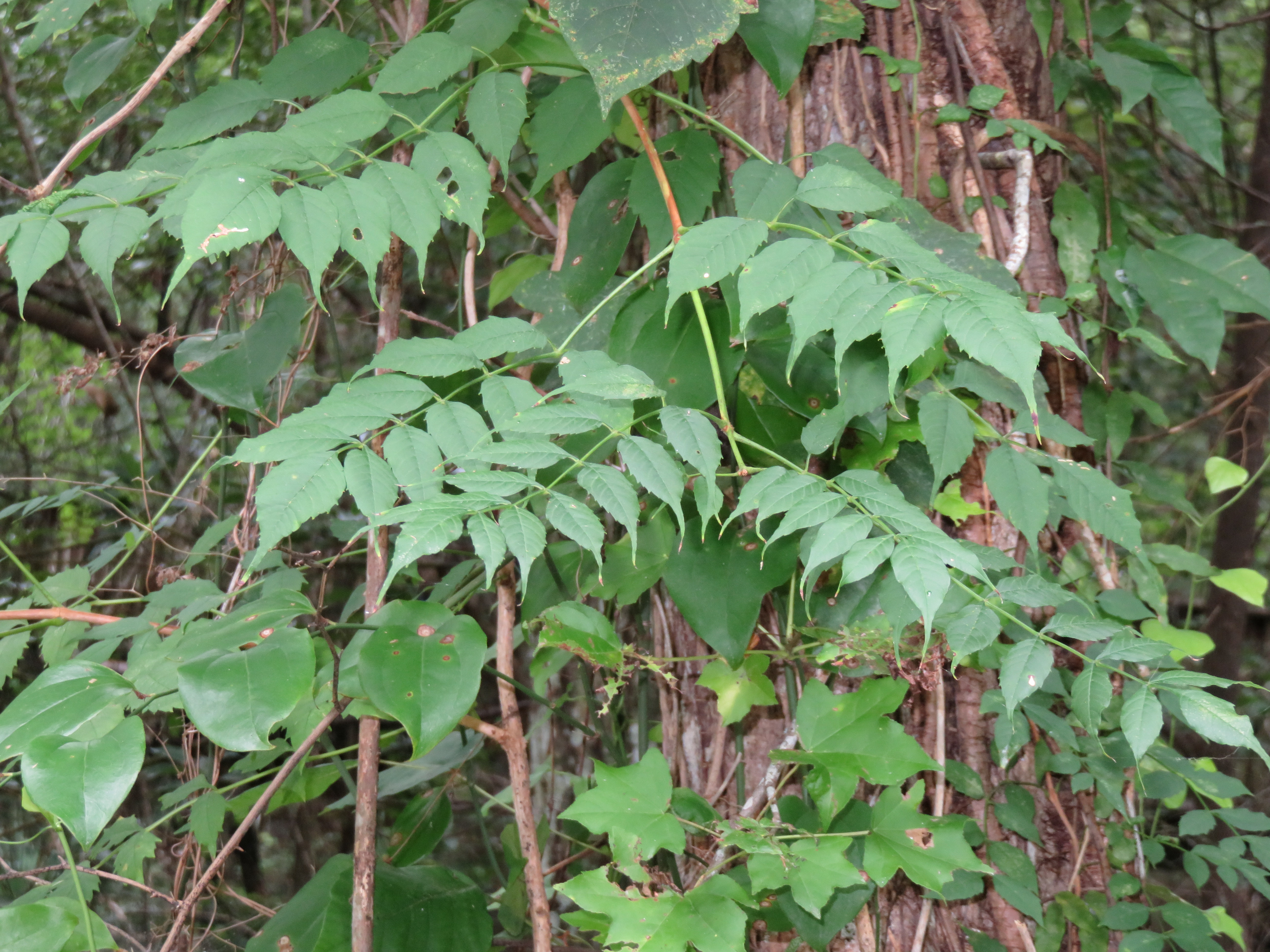

|
Trumpet Creeper - Campsis radicans
Woody high-climbing vine without tendrils. Leaves are opposite with serrated margins, 7-13 leaflets. Large, trumpet-shaped, brilliant reddish-orange
flowers all summer which attract ruby-throated hummingbirds |
Family Caprifoliaceae
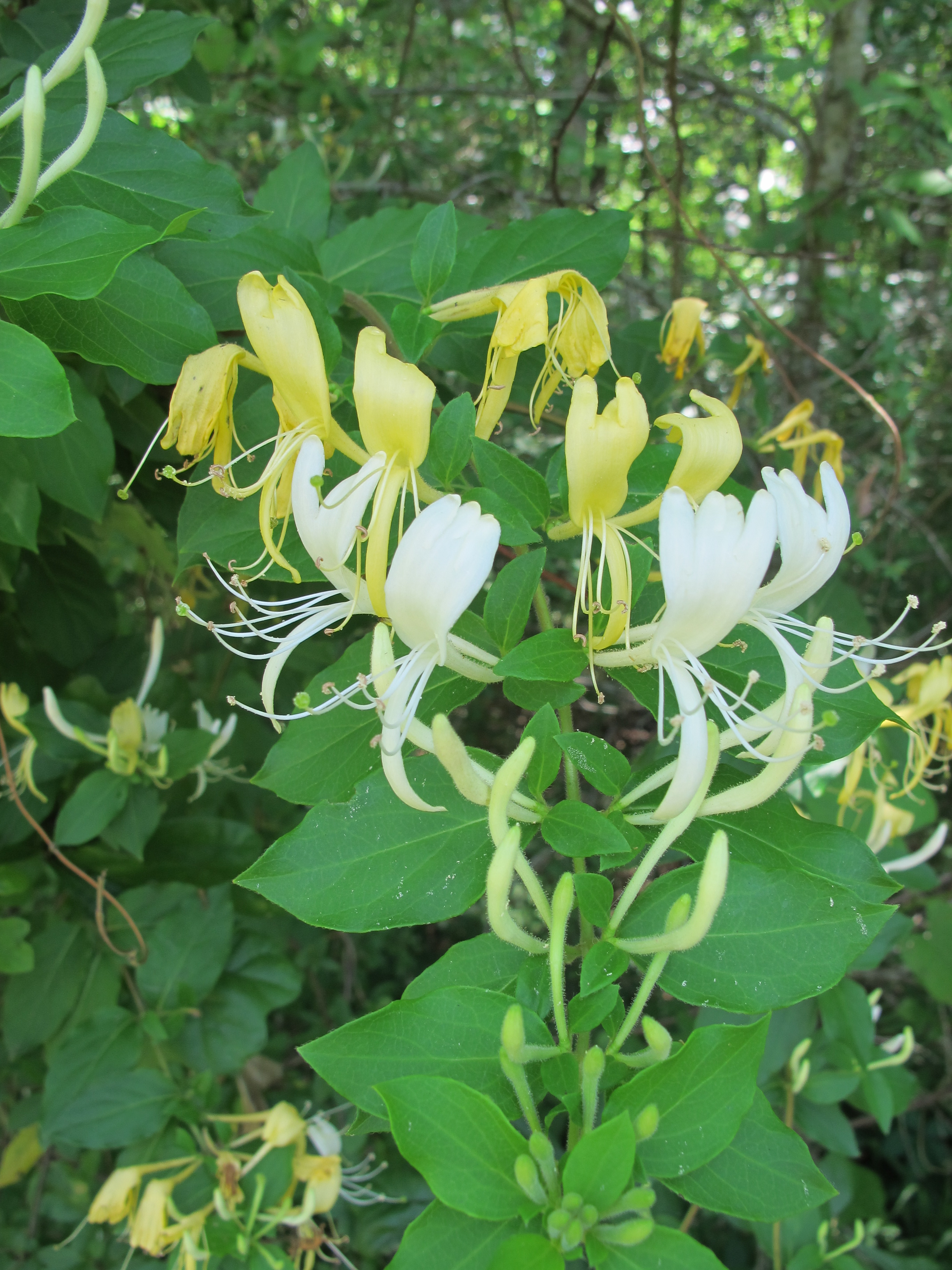

|
Japanese Honeysuckle - Lonicera japonica
Bird-introduced exotic. Shreddy-barked woody vine is brown and slightly hairy even when young. Opposite leaves, 1-3 inches long, oblong, with rounded
base. White or yellow fragrant flowers in late summer. White-eyed vireo, white-throated sparrow, purple finch, and American goldfinch enjoy this vine
in January, and cottontails graze on the foliage year-round. In Japan, the leaves and flowers are made into tea and drank as a tasty beverage, or
commonly used to treat colds, fever, or laryngitis. |
Family Convolvulaceae
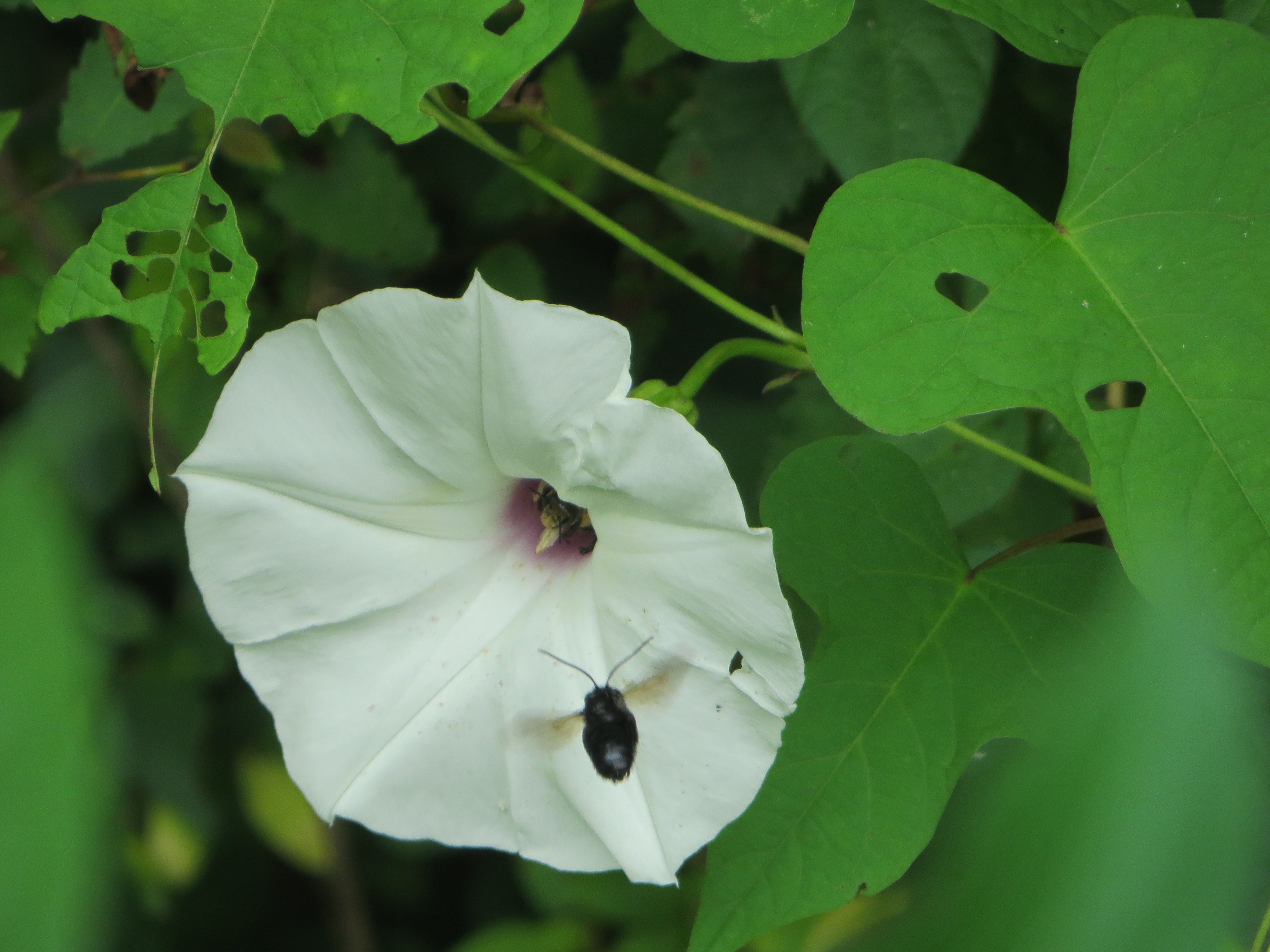
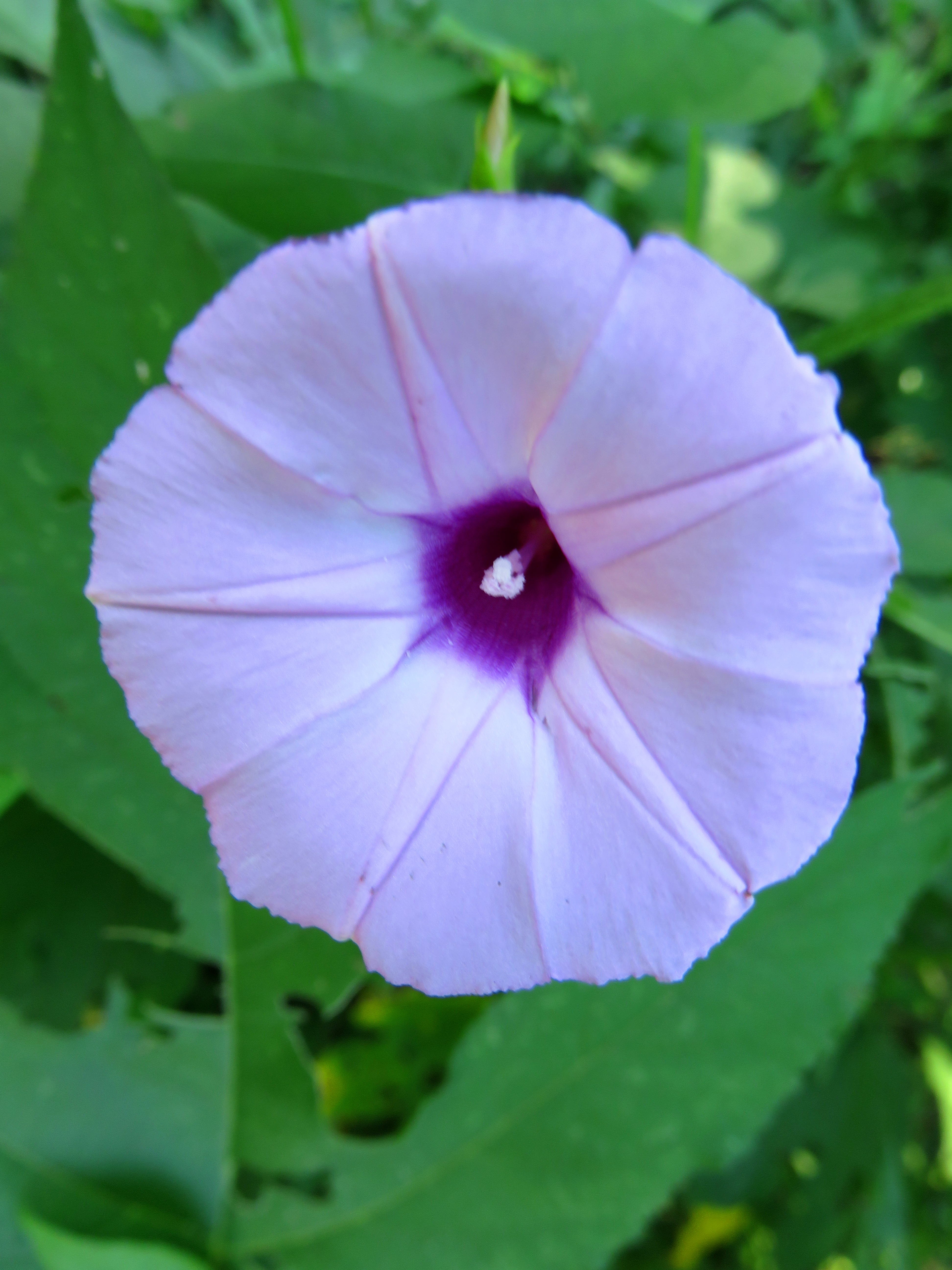
|
Morning Glory - Ipomoea sp.
There are several species of small herbaceous vines called "morning glories." Easily recognized by round flowers in pink, purple, or white.
Flowers close up at night and open in the morning, hence the name. Variable leaves may be triangular or lobed. Seen most often in sunny, disturbed
areas. |

|
Tie Vine - Jacquemontia tamnifolia
Small herbaceous vine. ½ inch bluish flowers in clusters bloom in fall. Sepals are very hairy. Prefers sunny, disturbed sites. Called "tie
vine" because this fast-growing annual vine will tangle up row crops. Seeds are eaten by seed-eating songbirds in the fall. |
Family Cucurbitaceae
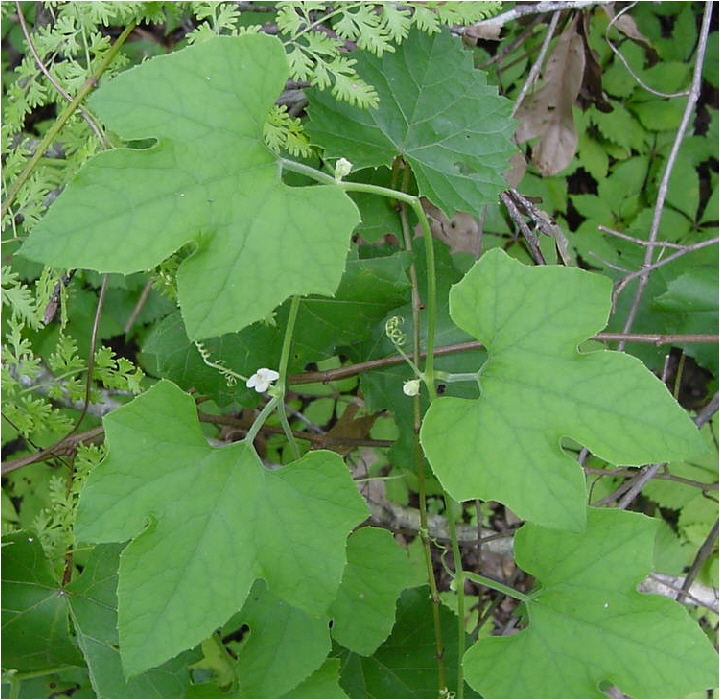
|
Cayaponia - Cayaponia quinqueloba
3-lobed leaves are finely hairy. Small white flowers replaced by reddish fruit. |
| |
One-seeded Bur Cucumber - Sicyos angulatus
Herbaceous vine with tendrils, angled stem. 5-lobed leaves are sticky and hairy. Whitish flowers followed by cluster of dry bristled fruit.
|
Family Fabaceae

|
Butterfly Pea - Centrosema virginianum
A small delicate herbaceous vine growing up to 6 feet. 3 small leaflets. Small purple flowers. A leguminous plant so its fruit is a slender flattened
pod of peas. |
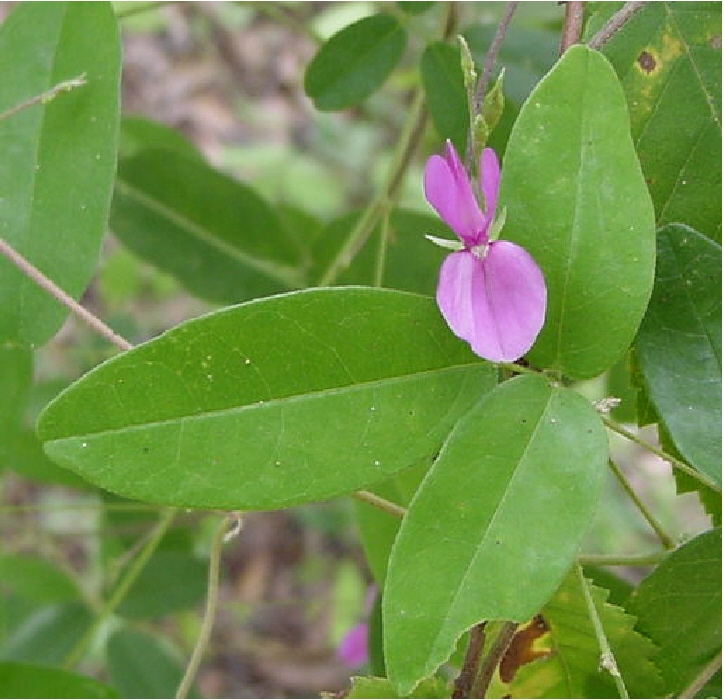
|
Downy Milk-pea - Galactia volubilis
Purple flowers grow on a plant that closely resembles both butterfly pea, except with different flowers, and beggar's ticks, except that milkpea
is a vine. Because of this, it is easily overlooked and also difficult to key out. All have three oval-shaped leaflets and pink to purple flowers.
Sometimes found in the escarpment area of the Acadiana Nature Park. |
Family Liliaceae
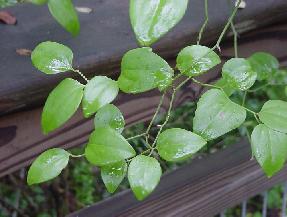
|
Greenbriar - Smilax sp.
Several species of herbaceous vines. Shiny, leathery, dark green leaves, shape varies by species. Occasional spines. Greenish flowers in summer, dark
berries mature in fall and may be eaten by several birds including mockingbirds, catbirds, and fish crows. Rabbits and raccoons eat the leaves and young
shoots, and beavers may dig up and eat the tubers. American Indians would treat muscle cramps or other pain by rubbing stem prickles on skin. They also
used tea to treat rheumatism, stomach pain, boils, and more. Chemists have tested and confirmed the anti-inflammatory, cholesterol-lowering, and
anti-stress properties of various species of Smilax. |
Family Menispermaceae

|
Carolina Moonseed - Cocculus carolinum
Evergreen vine with poisonous grape-like fruit clusters. Vine is herbaceous above, woody at base. Several species eat the fruit from November to December
including Eastern phoebe, mockingbird, brown thrasher, cedar waxwing, and white-throated sparrow. |
Family Passifloraceae
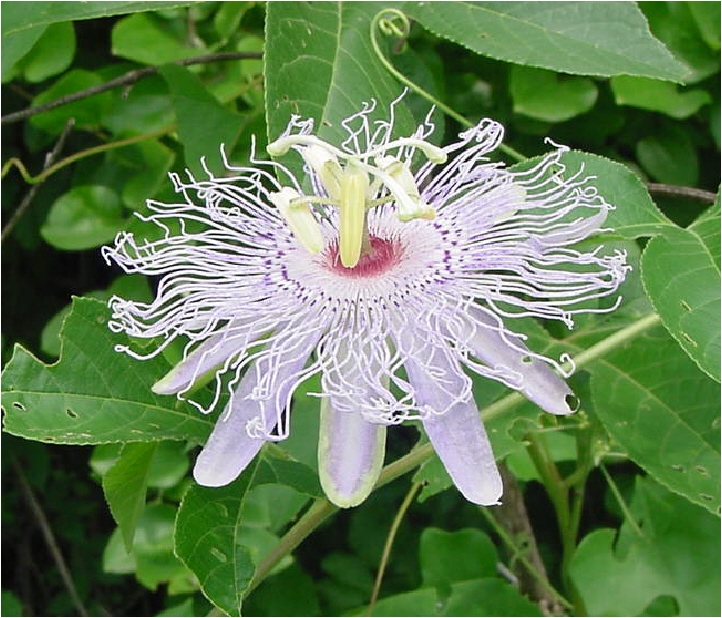
|
Passion Vine - Passiflora incarnata
Found in the escarpment area of the Acadiana Nature Station, in sunny spots. Its purple flowers have a whorl of fringe over the petals and a beautiful
complex pattern of sepals, filaments, and anthers. The edible fruit are called "maypops," round yellow pods when ripe. Leaves are deeply
three-lobed. Seeds inside the fruit pods are consumed by songbirds, and fritillary caterpillars eat the foliage. |

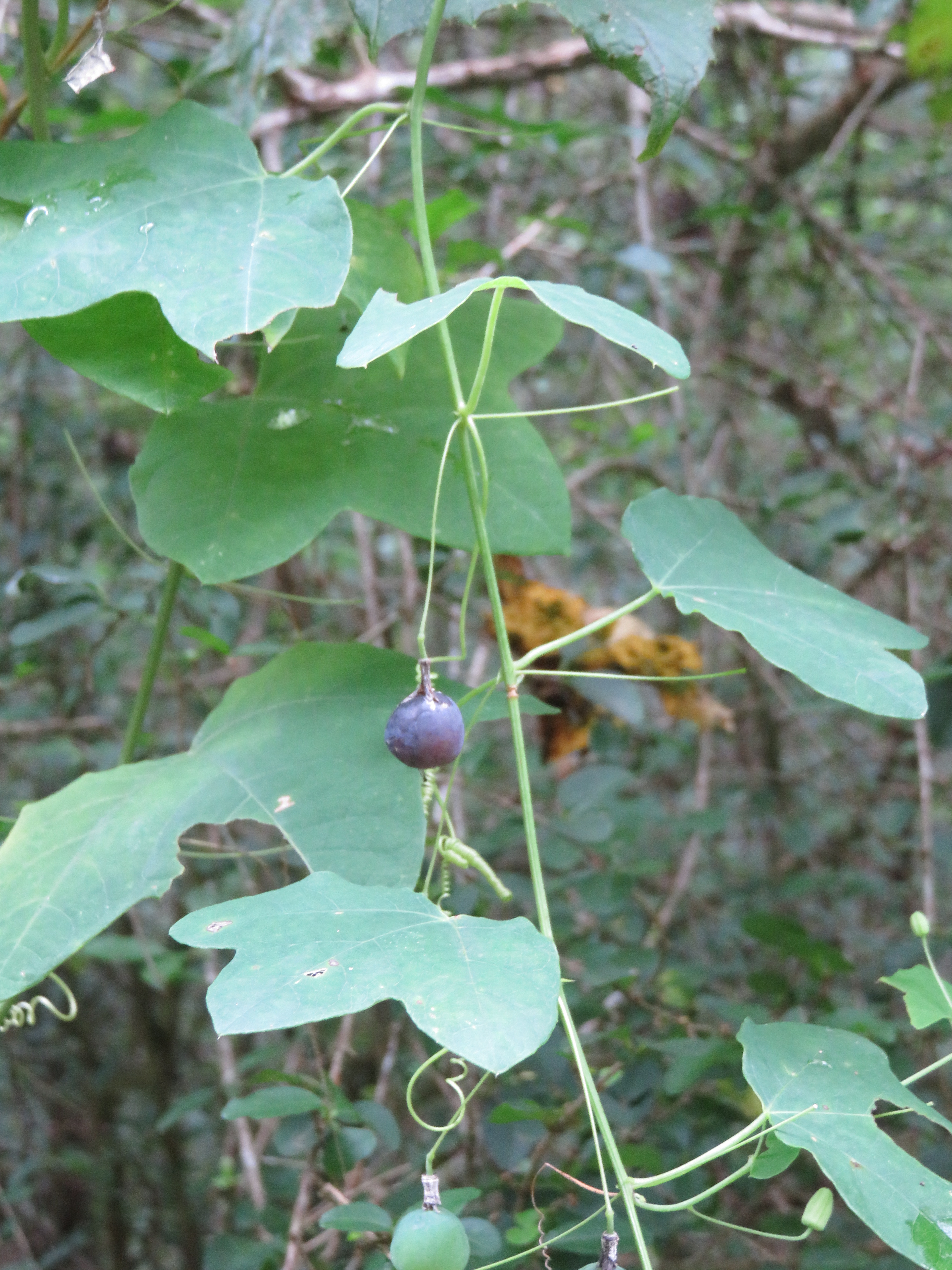
|
Yellow Passion Vine - Passiflora lutea
Slender stem but high-climbing with tendrils. Broad leaves have 3 lobes. Summer-blooming small yellow flowers have fringe-like petals, a miniature
pale version of the more famous Passiflora incarnata. Uncommon; found beside streams in thickets.
|
Family Polygonaceae
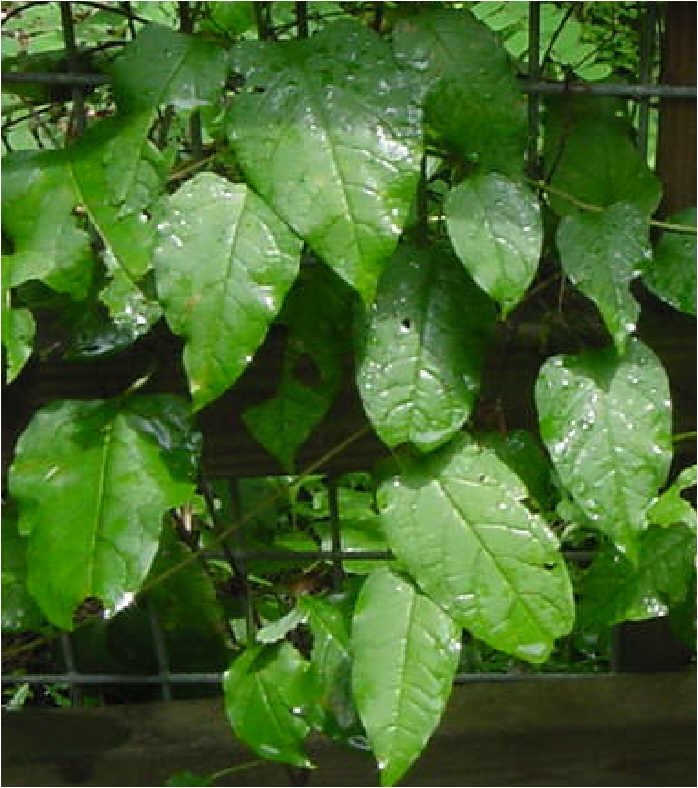
|
Ladies' Eardrops - Brunnichia cirrhosa
Finely grooved green to brown woody vine climbing with tendrils. Leaves are alternate, 2-6 in. long. The name probably comes from the small leathery
fruit which resembles earrings. |
Family Ranunculaceae
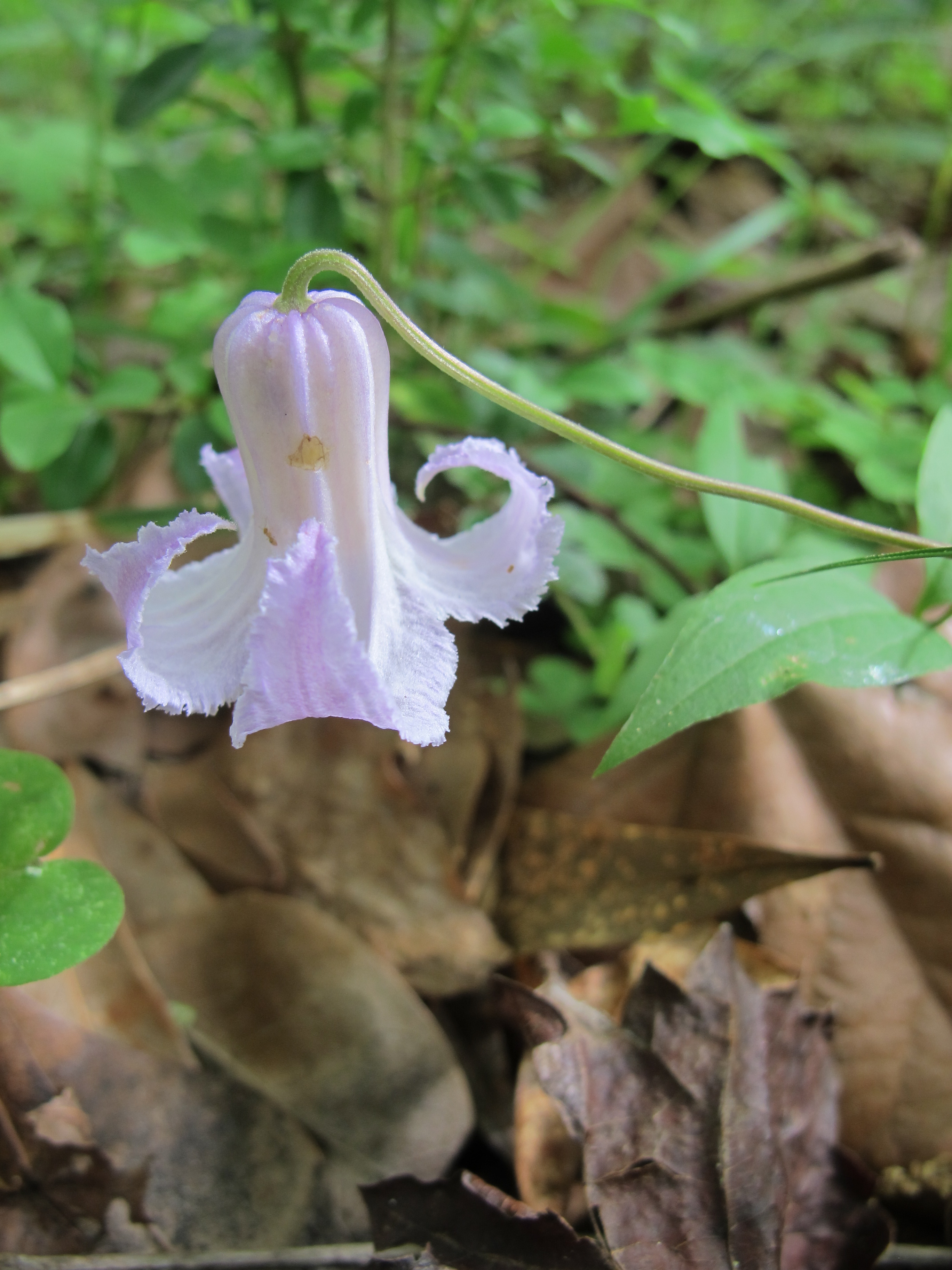
|
Curl Flower - Clematis crispa
Slender vine is herbaceous above; slightly woody near base. Climbs by twisting, elongated leaf petioles. Opposite, compound leaves have 2-5 pairs of
leaflets. 1-2 inch bluish flowers that bloom in summer are fragrant and crinkled. |
Family Rhamnaceae
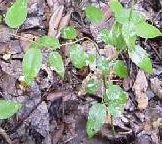
|
Supple Jack - Berchemia scandens; aka "rattan" or "black
jack"
High-climbing, woody, very thick vine. Leaves are small, oval, parallel-veined. Common, especially in bottomland/riparian habitats. Many species of
birds enjoy the small oblong dark fruit, as well as raccoons and squirrels. American Indians used bark or leaf tea to restore youthful vigor. Burned
stems were made into tea to treat a cough. |
Family Vitaceae
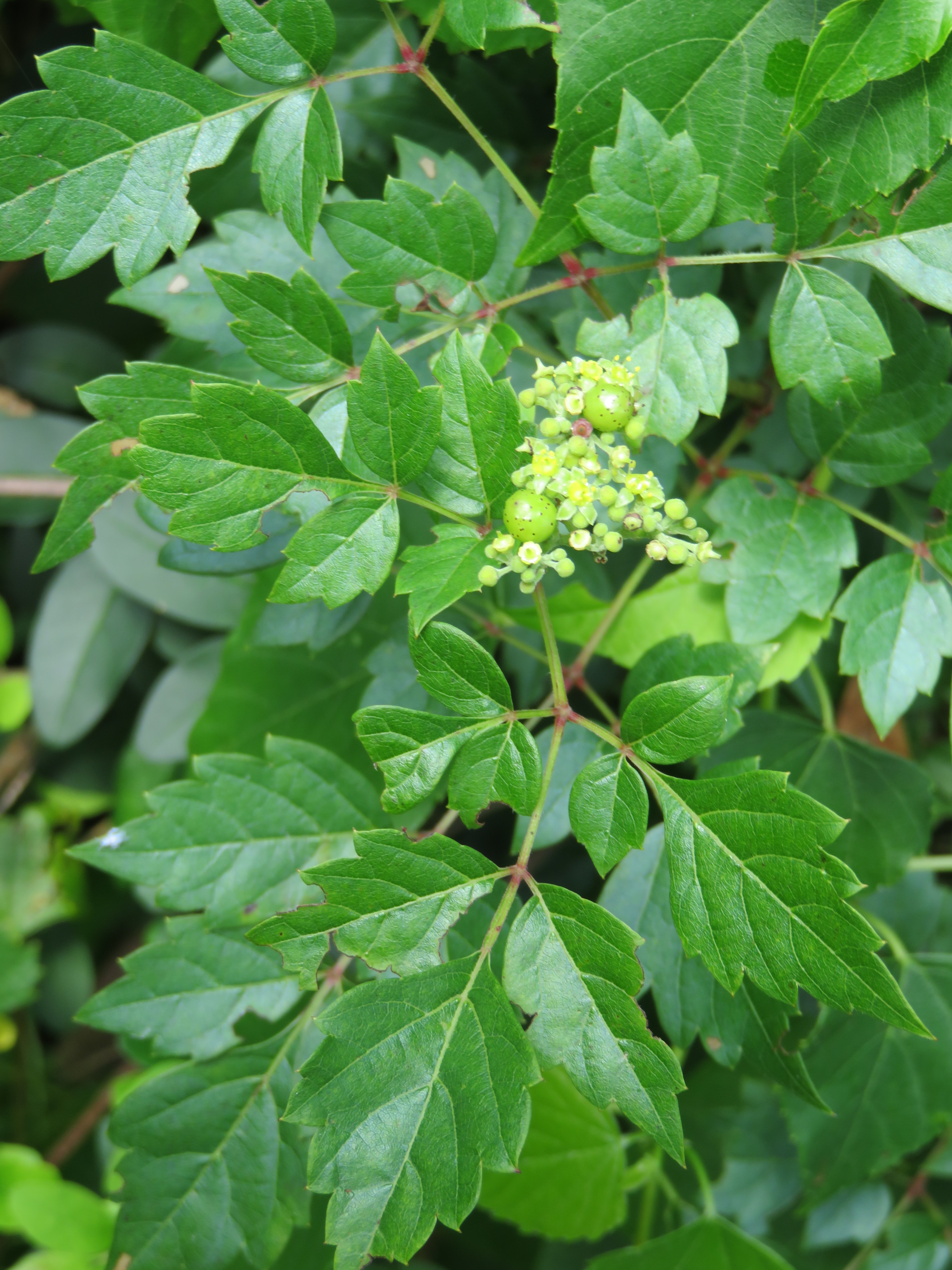
|
Pepper Vine - Ampelopsis arborea
This deciduous vine is found in sunny, disturbed sites. Grows in dense colonies. Slender vine climbing with forked tendrils. Leaves are compound, dark
green when mature, toothed. Young leaves and stems are red. Tiny green to black fruit looks like peppercorns, but are not edible. Birds that have been
observed eating berries in September include red-bellied woodpecker, veery, swainson's thrush, brown thrasher, and cardinal. Raccoons also enjoy the
fruit.Toothed leaves divided into five leaflets. Found throughout Louisiana, including cities. Possibly the most highly used (by the largest diversity of
bird species as well) native plant species among fall-migrating fruit-eating birds in Louisiana. American Indians used leaf tea for jaundice, diarrhea, or
to wash wounds as an astringent, but berries are toxic. |
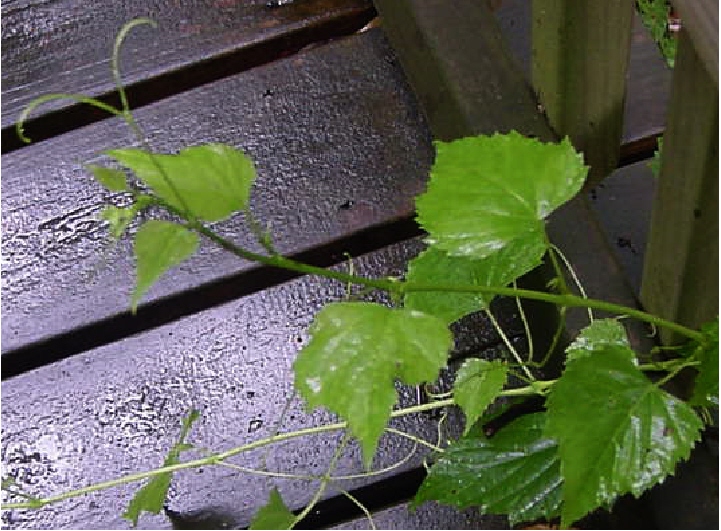
|
Pepper Vine - Ampelopsis cordata
Sometimes called "heart-leaf ampelopsis" because of its broad pointed leaves, which have serrated margins. Climbs with forked tendrils. Tiny
bluish-green to red fruit is not edible to humans, but some birds like cardinals, brown thrashers, and flickers eat it. |
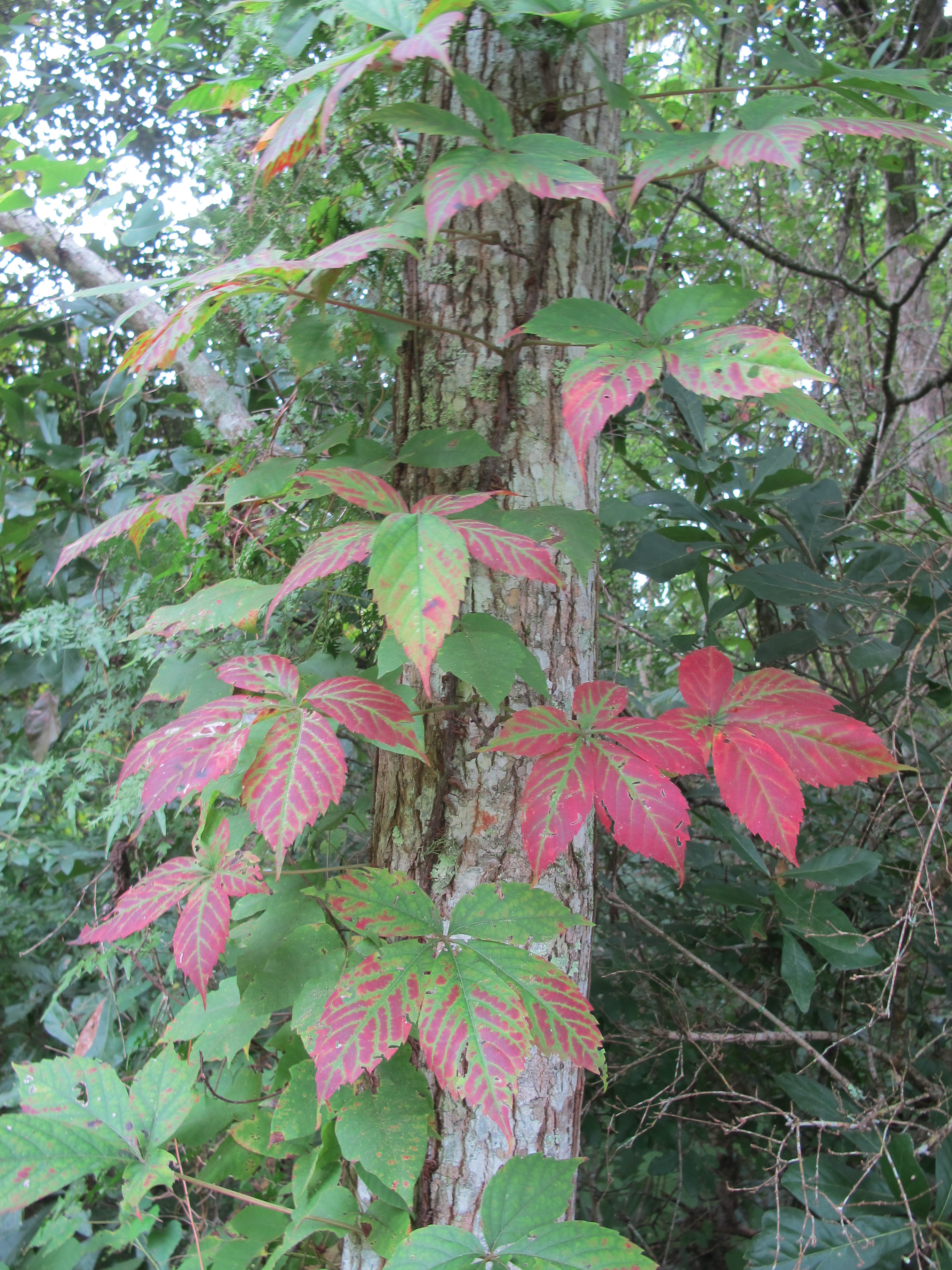

|
Virginia Creeper - Parthenocissus quinquefolia
Toothed leaves divided into five leaflets. Found throughout Louisiana, including cities. Possibly the most highly used (by the largest diversity of bird
species as well) native plant species among fall-migrating fruit-eating birds in Louisiana. American Indians used leaf tea for jaundice, diarrhea, or to
wash wounds as an astringent, but berries are toxic. |

|
Wild Grape - Vitis sp.
Over thirty species of birds use the various species of wild grapes in Louisiana. All have roughly heart-shaped, toothed, sometimes lobed leaves and
forked tendrils. Vines are high-climbing, woody. Squirrels, raccoons, skunks, opossums, and skunks eat the fruit as well as songbirds. |
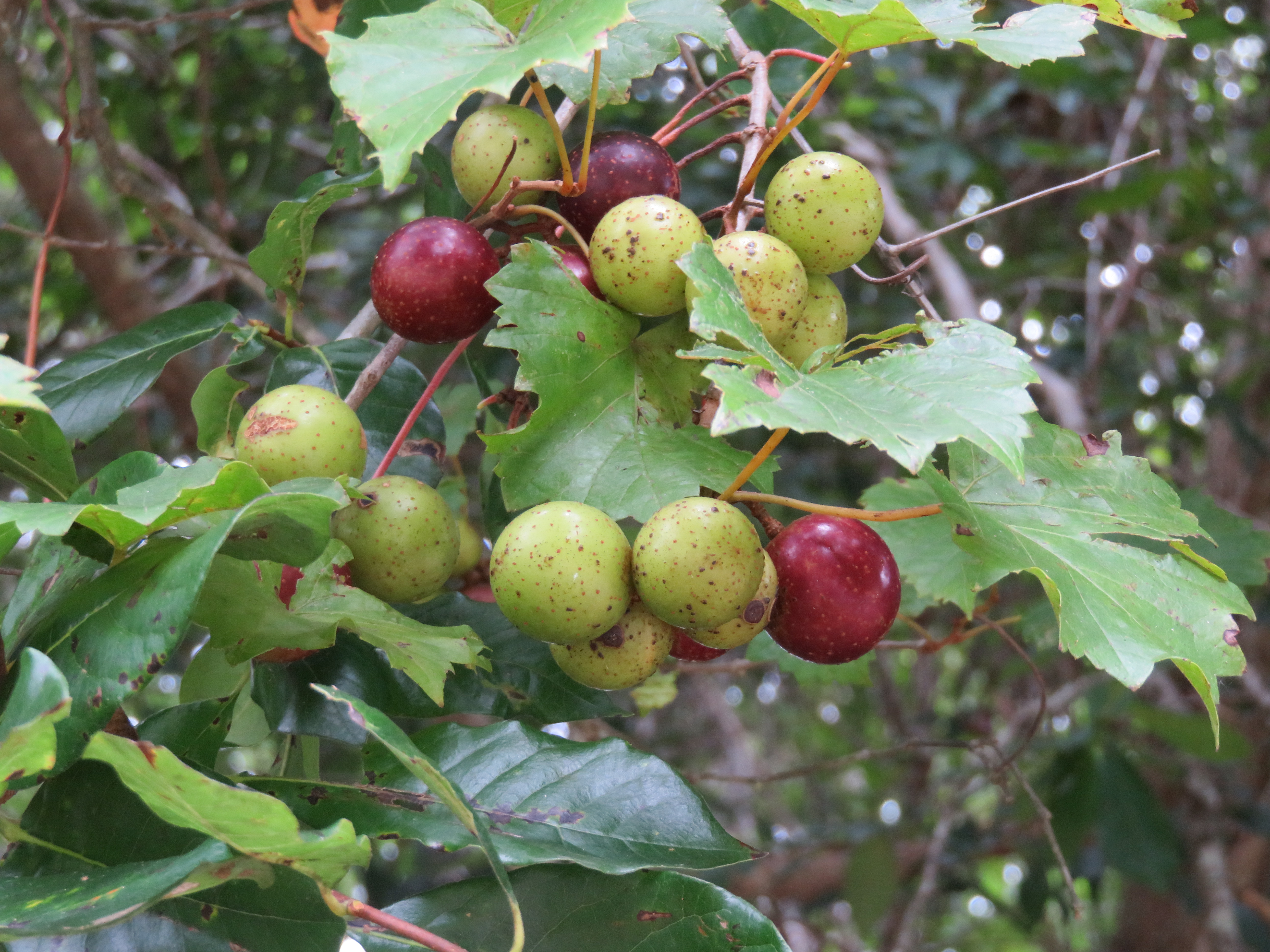
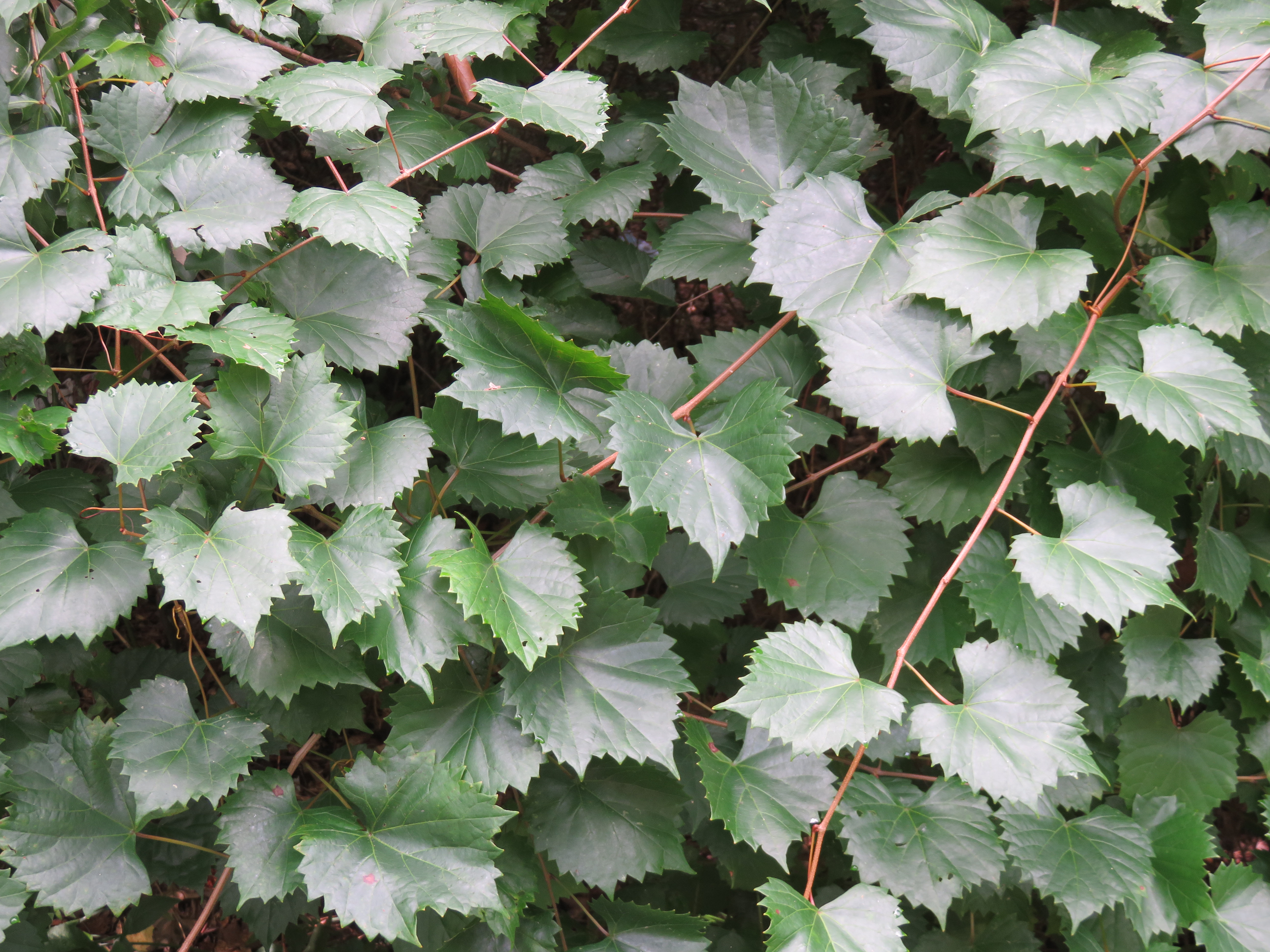
|
Muscadine - Vitis rotundifolia
This kind of wild grape does not have the shreddy bark of most grapes. Unlike other wild grapes, muscadine has single, not forked, tendrils. Purplish
black grapes maturing in late summer are edible and very tasty. Can climb 100 feet or higher. |
To see more photos, view our Facebook page.